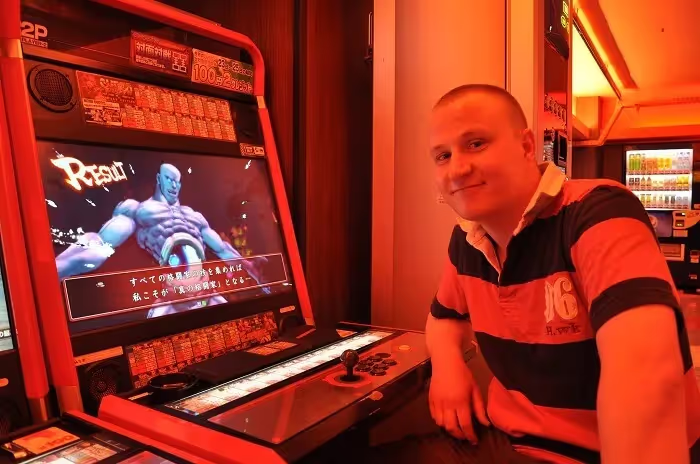Carrion may be one of the most disgusting games I’ve ever played. The developers should absolutely pat themselves on the back for that one. I had a visceral reaction to some of the slithering animations and shrill screams of the damned, hapless scientists in the facilities that I was wreaking havoc in. In Carrion, you play as a mysterious, evolving, mess of sinew that was being studied in a lab. Your existence seems pained and — per the premise of every other sci-fi horror film — you are dead set on one thing: spreading. You do this by creeping through a 2D Metroidvania-lite maze of labs, quarantine zones and weapon factories, among a few other areas. When you clear a room and find a save point, you plunge into the wall and ooze out tentacles and other red ephemera. The first time this happens, it is truly shocking. To travel from one area to another, you dive into an arsehole-like cavity of your own creation. The game simply knows how to repulse the player and instil a feeling of dread through its art and sound, even though you are playing as the monster and thus ostensibly the hero of the game. There is an element of power fantasy fulfilment as you smash people against walls and eat a pair of legs, but it is, on the whole, more horrific and unsettling than therapeutic. However, Carrion is a welcome and unique thrill that will keep you entertained through its somewhat short runtime.
In spite of the game’s gory aesthetic and its ostensible pull of playing as a murderous creature, you will actually be solving lever, door, and traversal puzzles in Carrion a lot more often than you’ll be eviscerating human bodies. The game is separated into zones, and you’re trying to unlock the final door of each zone by making your way to every savepoint and spreading your tentacles out there. Early on, the game is fairly linear, but as you unlock more powers you can tackle the order of savepoints differently in later zones.

Navigating the world of Carrion isn’t the most intuitive, and this is made intentionally more difficult by the absence of any sort of map. I would say that sussing out where to go is your biggest enemy in the game, even more so than the drones, soldiers and mechs you’ll be battling. You’re given a power that can echolocate the locations of savepoints, but it’s so vague that it is fairly useless as a compass. While the textures, effects, and design of the monster look fantastic, the actual art design for the areas in the game is quite repetitive and generic, and every area bleeds into the next. One might have water, or caves, but you’re not going to leave the game remembering any of these locales. Having more distinctive areas would have definitely made the game more interesting and less cumbersome to explore. This makes it even more frustrating to remember which screen you’ve been on and where you’re trying to go. I cannot recommend enough that you play Carrion as quickly as you can. Even starting my second day playing it, I was completely turned around. Some might find the oppressive, laissez-faire nature of this system immersive, but I can easily see many players losing their patience.
The nature of the puzzles themselves are pretty simple. Your powers are tied to what size you have your creature at, which can be increased by munching on people or decreased by depositing some of your mass in these specific pools. You’re mostly figuring out which size you need to be to continue on or be able to bring one item from one place to the other. Some of these do get tricky, but the system largely works and hits a nice balance where you never really feel stuck. However, if you choose the wrong size for a puzzle, some of the backtracking to find one of the aforementioned pools can be unnecessarily lengthy. The most entertaining puzzles in the game involve you taking control of humans, in sequences that feel heavily inspired by INSIDE, but you rarely have the opportunity to do this once the mechanic’s been introduced. You can also use this power to attack other enemies, but the humans move around so awkwardly — they strut around like Phil Collins in Genesis’ I Can’t Dance music video — and are spotted and killed so quickly, it’s really only useful for a few specific instances that the game telegraphs to you.

The difficulty is all over the place. The combat segments typically have you flying around a screen and simply being quick enough to grab someone before they can shoot at or shield themselves from you, or force you to sneak up on individuals and pick them off before engaging the rest of the group. The movement in Carrion feels just perfect, and it feels incredibly responsive and tactile to squish around levels and hide away in small spaces. There’s a lot going on in some of the more crowded battles, and using your appendages can feel a little clumsy, so it’s probably a good thing that the AI is on the dumber side. Battles never feel overwhelming, and you can really fly around quickly if you’re being cornered. Some of the most challenging bits of the game are near the beginning and in the middle, and the final third just sort of peters out.
Near the end of Carrion, it is strongly hinted that the player should backtrack and pick up any missed power-ups. Incidentally, I took this to mean that collecting these power-ups was required to finish the game. However, it just meant that I had not discovered the correct path forward. There was absolutely no use for these boosts, as I had completed all of the combat rooms and puzzles already. I never felt like I was given any sort of catharsis or explosive setpieces to remember the game by. My favourite moments were the ones in which I was able to find a closed-in nook, grab a person with a tentacle, and just throw them into walls continuously until I got tired.

Narratively, the game is shallow. There are some comedic moments that pop up in the text chyrons that introduce new areas, but the game takes itself dreadfully seriously, despite not really offering up a very satisfying story. There are hints at what is going on in the outside world and implications as to how the monster was birthed, but they just aren’t very interesting or novel. Your motivations as a protagonist are so dry and survivalist, the game really could have used a memorable antagonist to add some colour. The ending also felt predictable and early to me and didn’t really work. However, Carrion keeps you intrigued with its menacing atmosphere, terrific music and tense, twitchy gameplay. The music is thumping and heavy when it needs to be, and quiet and brooding during creepier moments. For many, the presentation may be enough, but a story with a little more to chew on really could have made this something special.
You can subscribe to Jump Chat Roll on your favourite podcast players including:
Let us know in the comments if you enjoyed this podcast, and if there are any topics you'd like to hear us tackle in future episodes!




